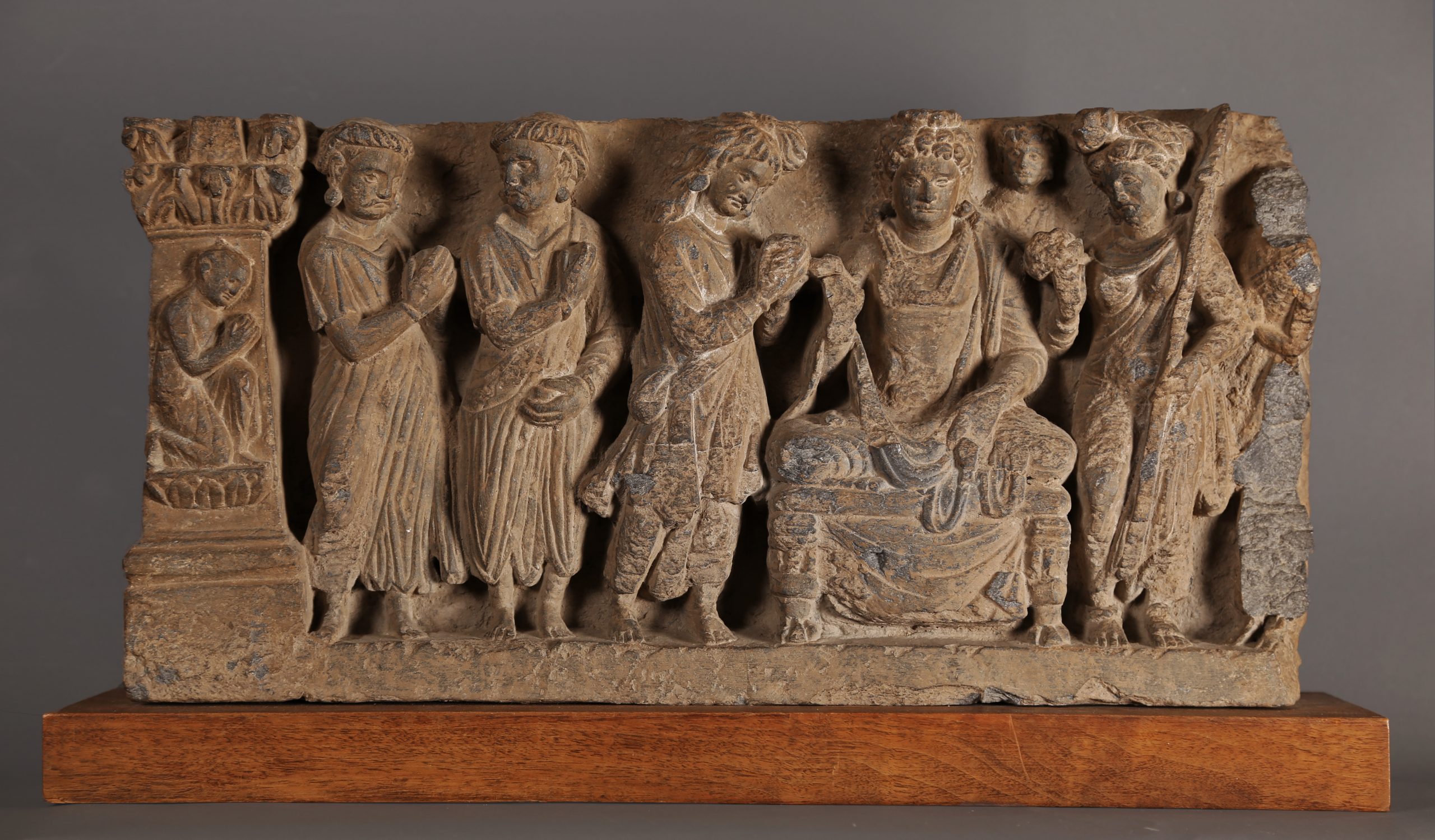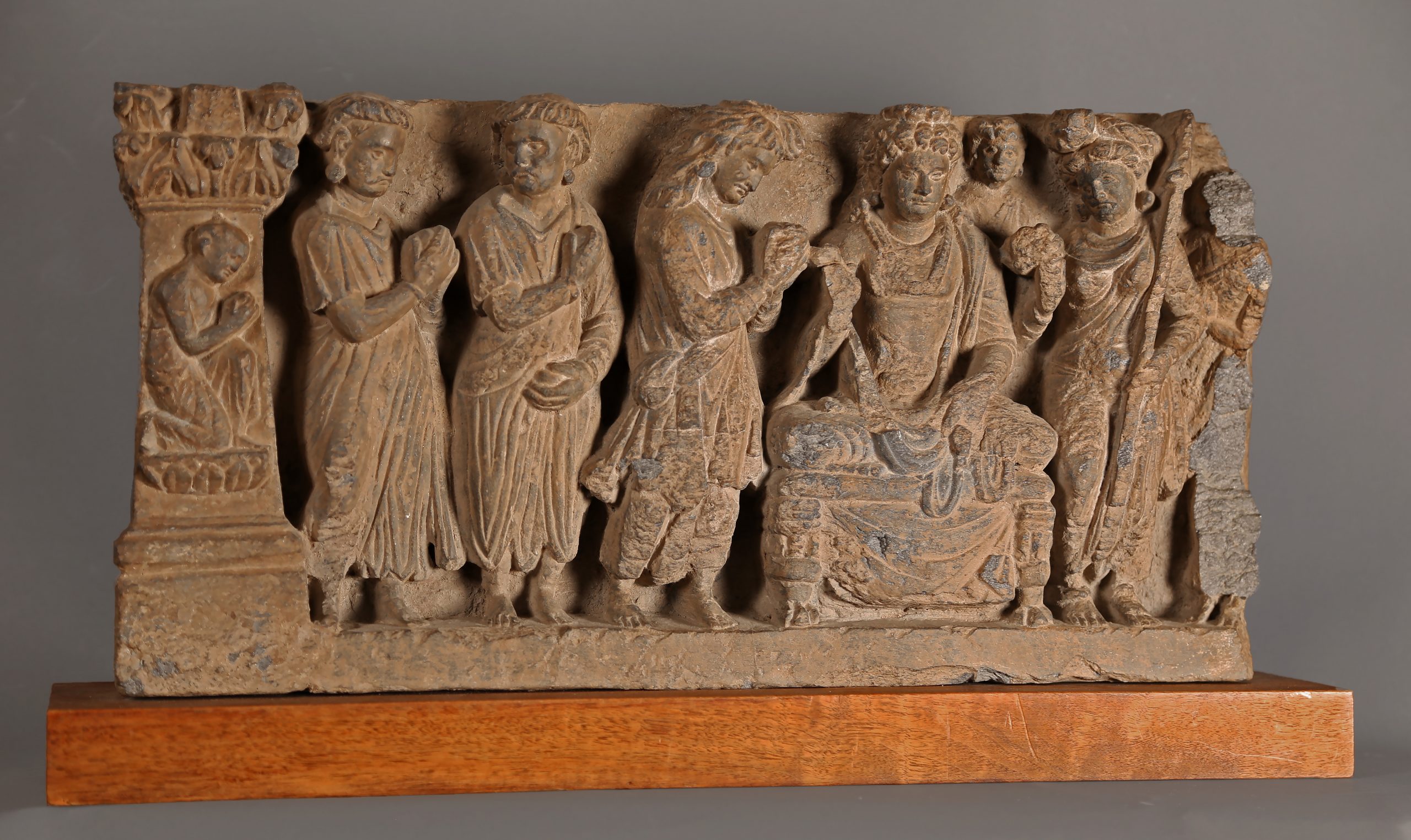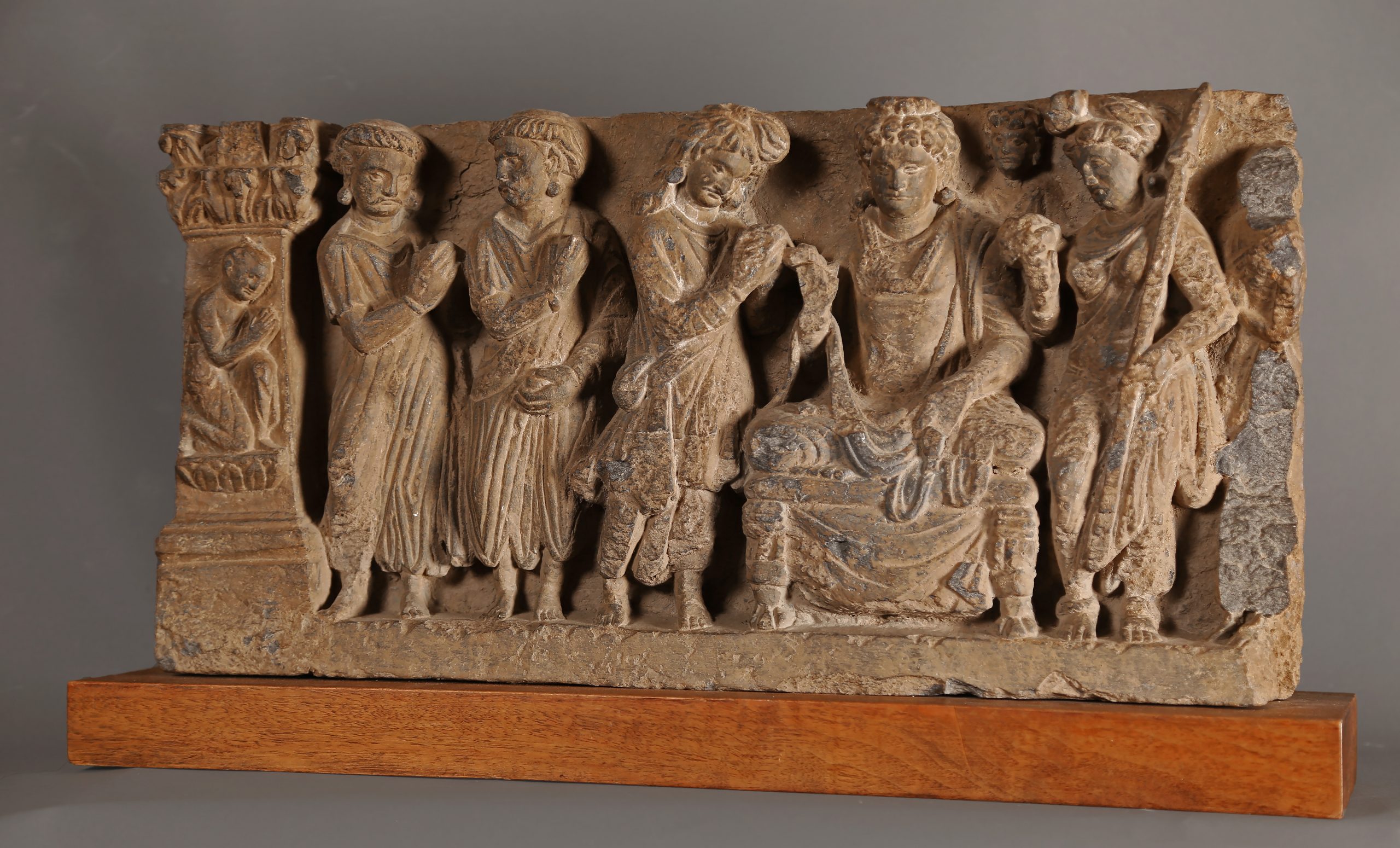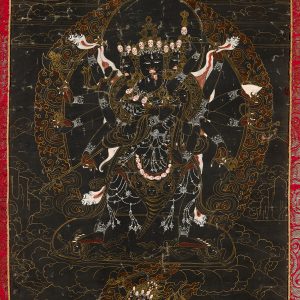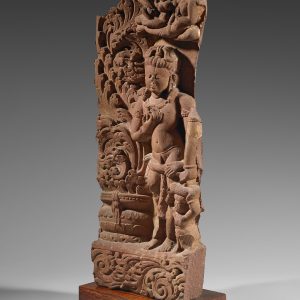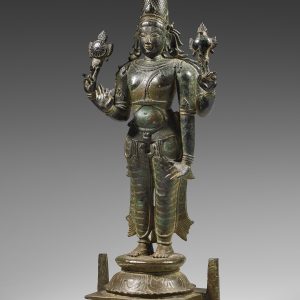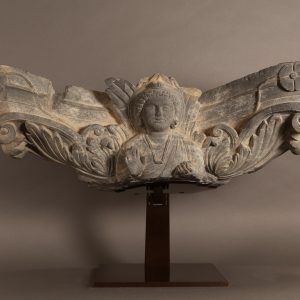Maitreya
Schist
Ancient province of Gandhāra
2nd-3rd century
H. 25 cm or 9 ⅞ in
Description
Maitreya, the future Buddha
The Bodhisattva Maitreya, the object of all devotion, is depicted here sitting on a throne, awaiting the next cosmic period when he will become the historic Buddha (manuśi buddha in the Mahāyāna). He is identified by the lustral water vessel (kuṇḍikā) he holds in his left hand, and make the “no fear” gesture with his raised right hand (abhaya mudrā). He is dressed like an Indian prince, his torso bare, a piece of his clothing (uttarīya) covering his left shoulder, wearing rich jewelry and a particularly elaborate headdress. Maitreya is a very important Bodhisattva and recognized by all forms of Buddhism. He might be the first whose iconography is established in the region of Gandhāra. Like the other Bodhisattva, he is “promised to Enlightenment” and out of compassion refuses supreme enlightenment until the totality of the suffering creatures that populate the phenomenal world accompanying them.
A strong devotion
Maitreya appears surrounded by a group that honors and worships him. Directly to his left stands a woman holding a spear in her left hand and probably a fly-whisk in her right hand. She is represented like the female guardians silently watching in some scenes of the life of the Historic Buddha Siddhārta, in Gandhāran art. Her presence emphasizes Maitreya’s sovereign character. A small figure in the back listens to the bodhisattva’s preaching, while on the left stand three rich devotees wearing heavy earrings, who have come to pay homage to him. The first man is dressed in a long-sleeved tunic and his long hair undulates to the shoulders with some of the locks tied in a loose bun. Behind him, two donors bring offerings. Their distinctive tonsures and clothing suggest that they are strangers. Finally, a monk, shown on the pillar that closes the scene, respectfully bows with hands joined together. This assembly was complemented by other devotees standing behind the female guardian.
An incredible fusion of motifs
The art of Gandhāra has a number of regional styles and without prejudging its exact origin, this relief is part of the most accomplished production. The various influences blend harmoniously. The pillar with a Corinthian capital of Hellenistic origin, the tonsures and clothing of the devotees coming perhaps from Central Asia, the elaborated feminine headdress typically Indian: this stele reflects the incredible cosmopolitanism that characterizes this art. We can also mention the rich jewels of the Bodhisattva, from the Sub-Continent, next to beautiful draped fabric, some treated with a graphic design that could be compared to Parthian sculptures.
Provenance : Private collection , USA, acquired from Sotheby’s New York in 1991.

